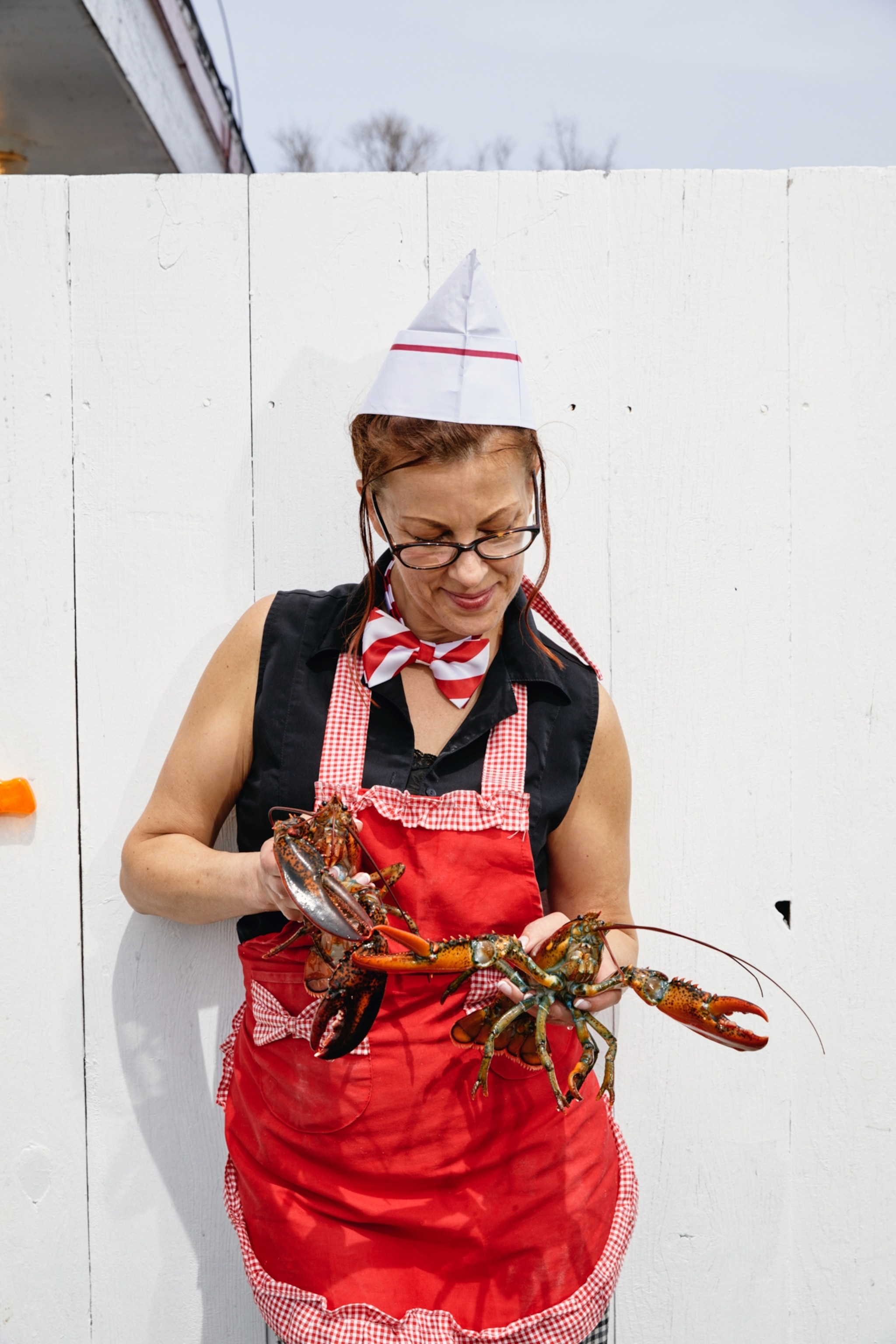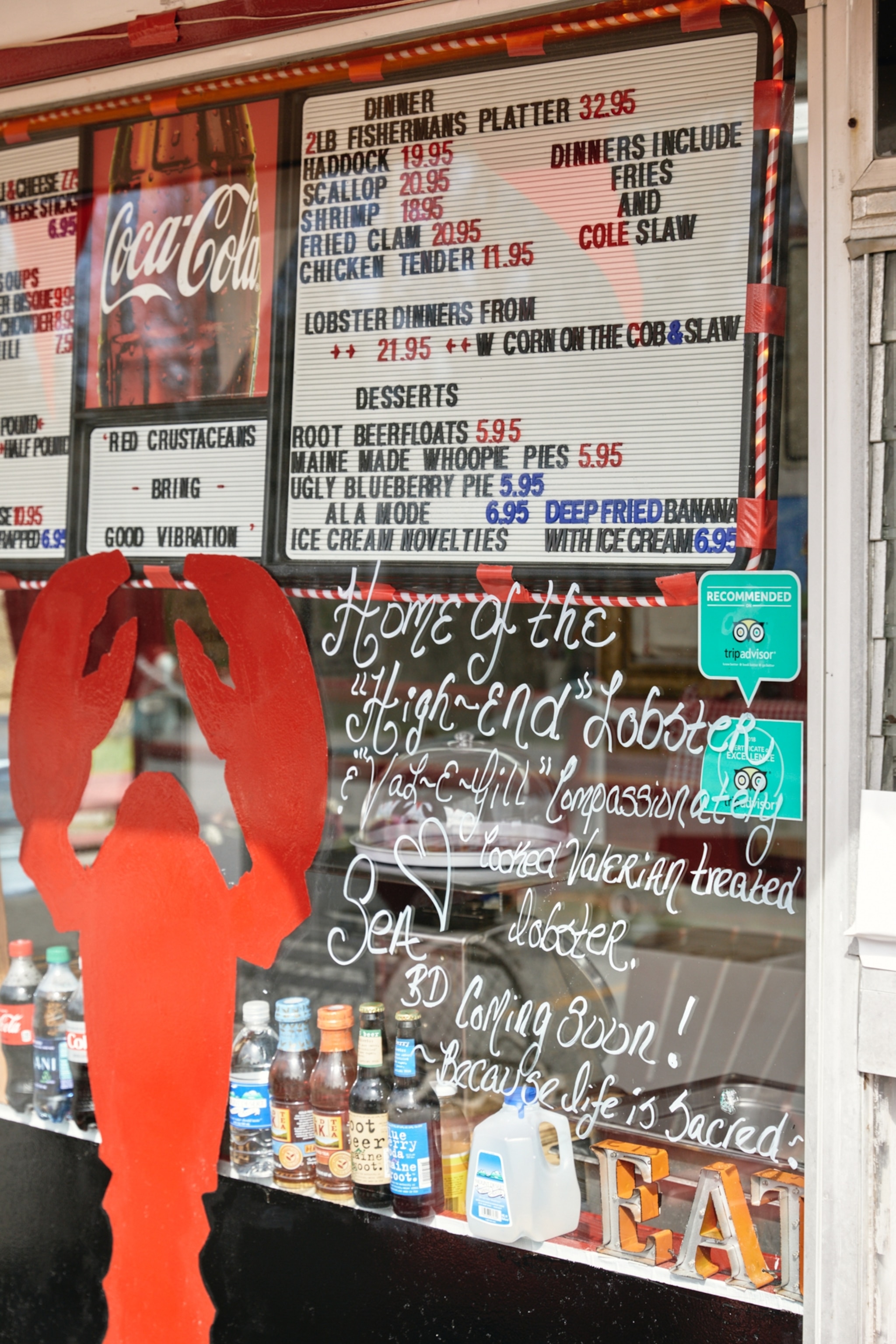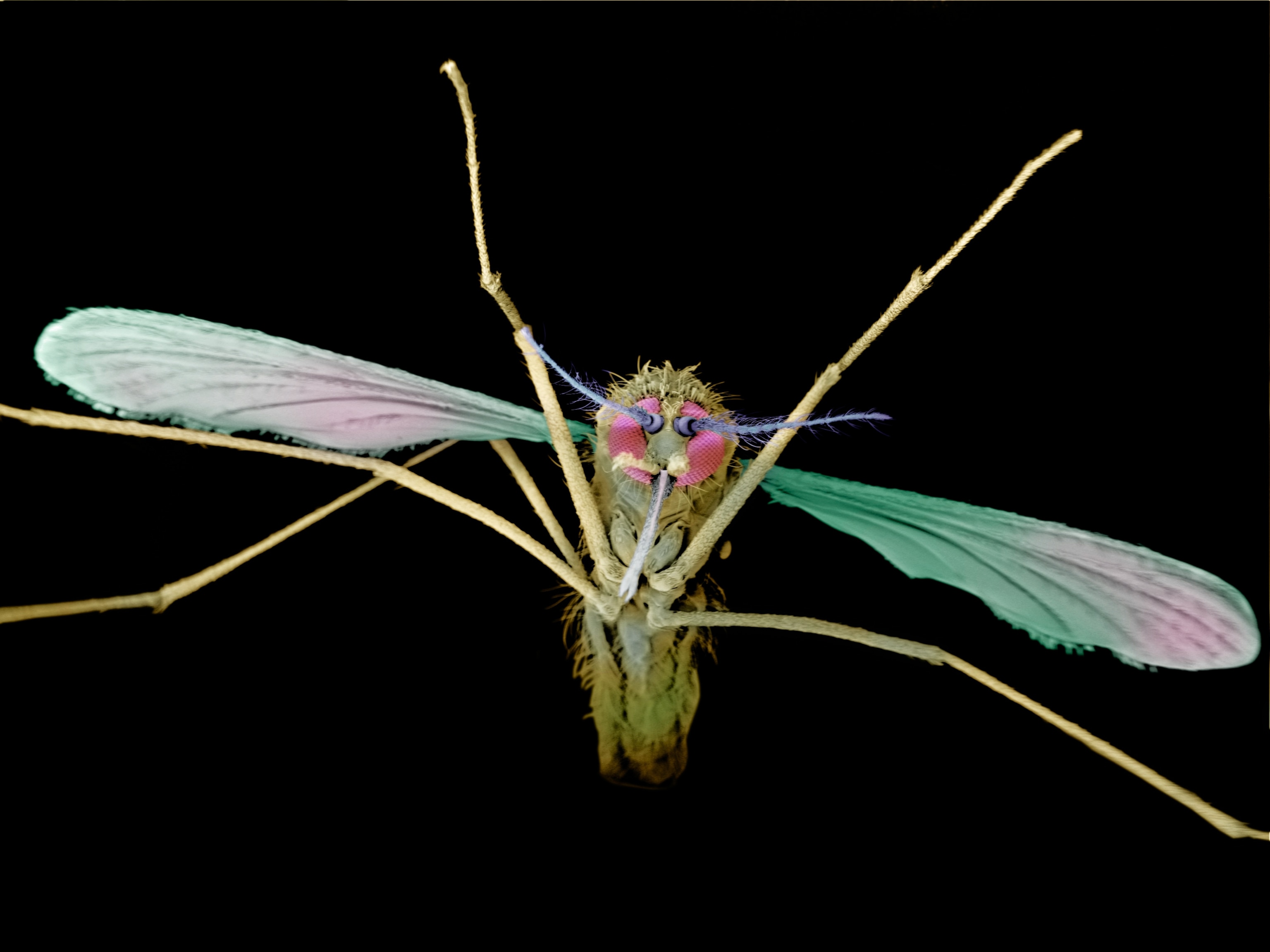Lobsters likely feel pain. Should we get them high before eating them?
Crustaceans show signs of distress when they’re boiled alive. This Maine restaurateur turned to an innovative solution to ease lobsters’ pain: hotboxing them.

Charlotte Gill bakes her lobsters—but not in the oven.
In 2018, Gill and her staff at Charlotte’s Legendary Lobster Pound in Southwest Harbor, Maine, made headlines after experimenting with giving live lobsters marijuana before cooking them.
As a child, Gill would save up her money to buy live lobsters and release them back into the ocean. As an adult running a lobster pound, where dozens of the crustaceans are boiled alive each day, her conscience ailed her. Though there’s no way to know for sure how lobsters experience pain, she says she’s observed them showing signs of suffering.
Then she realized—why not get them high first?
She found a 2006 study that said invertebrates—including lobsters—possess cannabinoid receptors, and marijuana is legal in the state of Maine, so she decided to give it a try.
First, she caught a test lobster named Roscoe. Then, she assembled a makeshift hotboxing device out of a plastic tub filled halfway with saltwater. Using an air mattress pump, she funneled the smoke from a bowl of burning cannabis in through a straw. Within four minutes, “extremely feisty” Roscoe had gone from snapping his claws and flipping his tail to drooping placidly in her hands.
When they put Roscoe back into a tank with other lobsters, not only was he relaxed and social, he seemed to have a calming effect on the other animals as well.

The marijuana effects seemed to wear off after about three hours, but she held Roscoe for two weeks, observing him every day to see if he acted differently. He remained healthy. Then, Gill released him back into the ocean. “I figured for his contributions to science, he deserved to go free.”
Next, she hotboxed more lobsters, then cooked them. “The lobster meat actually tasted sweeter, it tasted better and lighter and was actually more tender,” Gill says. Her father, a retired minister in his 80s who “had never been exposed to cannabis in any way,” agreed to act as her test subject. After eating copious amounts of drugged lobster, a urinalysis performed at home showed he tested negative for marijuana.
Gill was ready for customers.
Not so fast, said the state health department, which heard about the marijuana-treated lobsters and threatened to shut her restaurant down, Gill says.
Instead, the department sent her something called the GRAS list (pronounced grass, “which I thought was ironic,” Gill says) that lists additives generally recognized as safe in food.
So Gill began administering the government-approved valerian root, a medicinal herb, to her lobsters instead by immersing them in a valerian-saltwater mixture for about 30 minutes, which she suspects works about 75 percent as well as cannabis. Today, she’s still at it. She estimates valerian root costs her over $1,000 per month—a cost she absorbs. “I never wanted anyone to say, Oh, you're just doing that for the money,” she says. “It’s the right thing to do.”
And now, it’s scientifically backed. In 2021, researchers tested Gill’s theory by exposing study lobsters to THC vapor generated by an e-cigarette. The study, which references Gill (though “nobody ever reached out to us,” she says), supported her theory—it found the lobsters moved more slowly after the exposure, potentially indicating greater calmness, though they still reacted to the heat.

Warning signs of pain
Scientists have long debated whether popular seafood species like lobsters, crabs, and shrimp experience pain. The controversy over lobsters has been particularly fervent, since they’re often boiled alive for food safety and taste reasons.
Crustacean brain structures are different from those of humans, and some scientists have argued that their reactions to harmful stimuli are just knee-jerk reactions that protect the animals. That’s different than pain, which is defined as an unpleasant sensory and emotional experience.
Gill says her lobsters seem to display signs of distress, such as scratching at the sides of the pots, dropping their claws (lobsters can discard limbs as a defense mechanism), and trying to climb out. (Read more about how animal suffering was on display at a San Francisco market.)
These responses may be similar to a person withdrawing their hand after touching a hot stove, researchers say.
“That reflex is in progress before any pain is experienced and doesn't involve the brain at all,” says Jonathan Birch, principal investigator of a project called the Foundations of Animal Sentience, which is part of the London School of Economics and Political Science. “And so some people think, well, maybe that's all that's going on [with lobsters].”
It’s impossible to know for certain if lobsters’ experience of pain mirrors ours, but “what we've got is a lot of warning signs,” Birch says.
For example, in a 2014 study, researchers found that crayfish would hide in dark corners of their tank after exposure to an electric jolt. But administering an anti-anxiety drug reversed the effect, suggesting that crayfish can have anxious mental states. “You’ve clearly got something going on that is more sophisticated than just a reflex,” he says.
“You’ve clearly got something going on that is more sophisticated than just a reflex."Jonathan Birch, lead author of the UK crustacean sentience review
Growing evidence supports the idea that our seafood does in fact feel pain. In a 2015 study, scientists observed how 20 European shore crabs reacted to electric shocks. Sixteen walked around their tanks and four tried to climb out. They also had almost three times as much lactic acid buildup in their blood-like hemolymph—a clear indicator of stress—compared with the control group, which received no electric shocks.
Crustaceans also tend to their injuries, sacrifice resources to avoid harmful situations, and react to painkillers, according to the U.K.-based animal welfare organization Crustacean Compassion.
Based on all this, Birch says for lobsters and crabs dropped in boiling water, “there's a very realistic possibility that those two minutes are spent experiencing very extreme suffering.”
In 2018, the Swiss government ruled that lobsters must be stunned before they’re boiled. In 2021, following a government-commissioned review of more than 300 studies that found strong evidence for crustacean sentience, the U.K. updated its animal welfare bill to include lobsters, octopuses, crabs, and other animals.
Birch, lead author of the review, says this should hopefully lay the groundwork for “more meaningful on-the-ground protections for these animals.”
A pipe dream
As for Gill, she still cooks cannabis-mellowed lobsters at home for her family and friends.
Her efforts might be effective, but really they highlight how little research has been done on humane slaughter methods for crabs and lobsters, Birch says.
Stunning the animals first with electricity has been shown to work, but the pain levels involved in that method are murky as well. “We can't be sure there's no pain involved, but we can be sure it's much swifter,” he says.
In the meantime, valerian root will have to suffice, Gill says, but she hopes someday she can ship her humanely cooked product nationally, whether treated with marijuana or valerian root.
“It really kind of sounds like a—no pun intended—a pipe dream,” Gill says. “But maybe people then start demanding it … Little things can change the world in big ways.”








